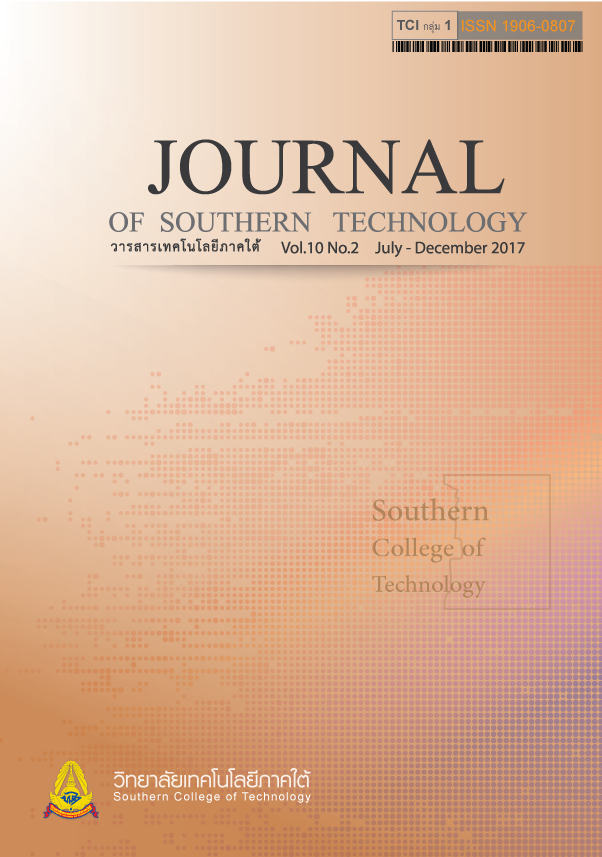Optimization of Biogas Production from Co-digestion of Nipa Palm Biomass Hydrolysate and Palm Oil Mill Effluent
Main Article Content
Abstract
The objective of this research was to study the optimization of biogas production from nipa palm hydrolysate (NPH) with palm oil mill effluent (POME). Three factors affecting biogas production were dilution rate (NPH: POME) (0:1, 1; 1, 1:1.5 and 1:2), initial pH (6.5, 7, 7.5) and NaHCO3 concentration (0, 2, 4, 6 and 8 g/L) was investigated. Batch anaerobic fermentation used for the digestion were operated at room temperature (30±2 ºC) for 15 days. The statistical analysis used consisted of percentage, mean, standard deviation and analysis of variance by SPSS 16.0.
The research results of batch fermentation showed that the optimum values for biogas production were 1:1.5 of dilution rate, initial pH 7 and 4 g/L NaHCO3, giving the highest cumulative biogas production of 7,300, 7,250 and 9,867 mL/L and COD removal of 80.53, 80.16 and 84.37%, respectively. Furthermore, the biogas production rate of 607, 590 and 822 mL/day, was obtained respectively. The co-digestion strategy was also applied to a 1 L-bioreactor that was usually used for treating nipa hydrolysate. It was found that the highest cumulative biogas production of 9,833 mL/L and rate of biogas production was 821 mL/day. COD removal of 83.53% and methane content was 55.33%.
Article Details
-
Authors must agree to the journal publication rules and allow the editors to edit the manuscripts for publication.
-
Author’s right belongs to the author but Journal of Southern Technology holds the right of first publication and thus allow readers to use the article for the purpose of education but not commercial.

